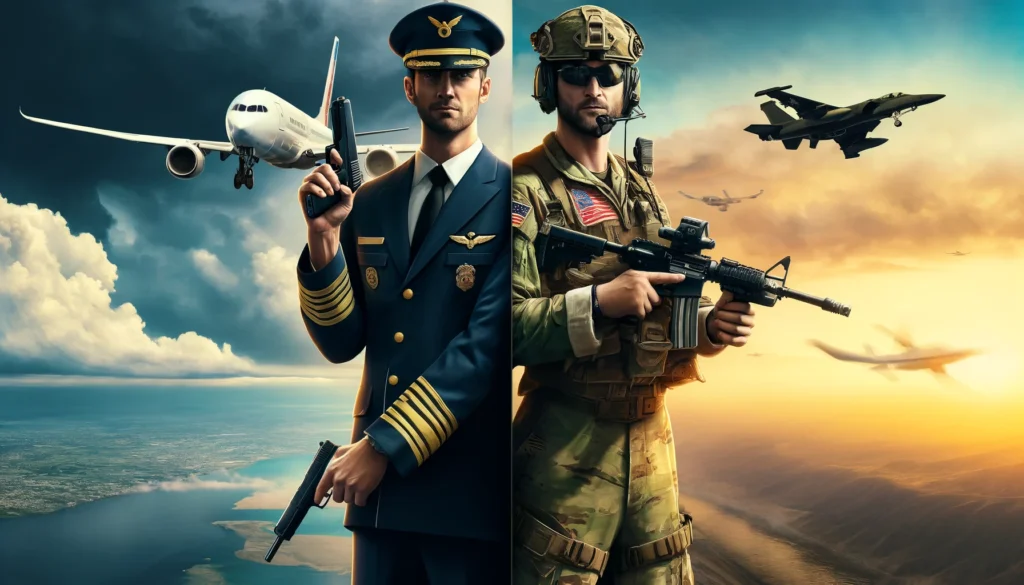From the battle-focused methods and tools of military aviation to the security components of the commercial aviation sector, the “pilot gun” term covers a wide array of practices and equipment, all designed to ascertain the safety, survival, and security of pilots in the atmosphere.
Historical Evolvement of the Pilot’s Firearm During WW1 & WW2
Besides, the incorporation of firearms into a pilot’s survival kit experienced a drastic transformation during the past one hundred years.
Furthermore, from the beginning of aviation history, during World War I, pilots had very simple handguns to protect themselves from the enemy in case of landing in enemy territory. Advancements in aircraft technology and missions took people further into more remote and hostile areas during World War II, and after, there was a need for a more powerful survival kit, including advanced & powerful firearms, which could be relied on.
This historical background reveals the clear progression of firearms in the aviation industry. Furthermore, in the moment of need and as part of the overall strategy against aircraft combat and reconnaissance risks.
Evolution of Firearms in Aviation
| Era | Firearm Model | Usage Context | Notable Features |
| World War I | Colt M1911 | Personal Defense for pilots | .45 caliber, reliable in various conditions |
| World War II | M1A1 Thompson | Survival kit for bomber crews | .45 caliber, compact version of the Thompson |
| Cold War | Smith & Wesson Model 15 | Issued to U.S. Air Force pilots | .38 Special, versatility and ease of use |
| Modern Era | SIG Sauer M18 | Standard issue for U.S. Armed Forces, including pilots | 9mm, modular handgun system |
Training and Regulation Concerning Pilot Gun Ownership
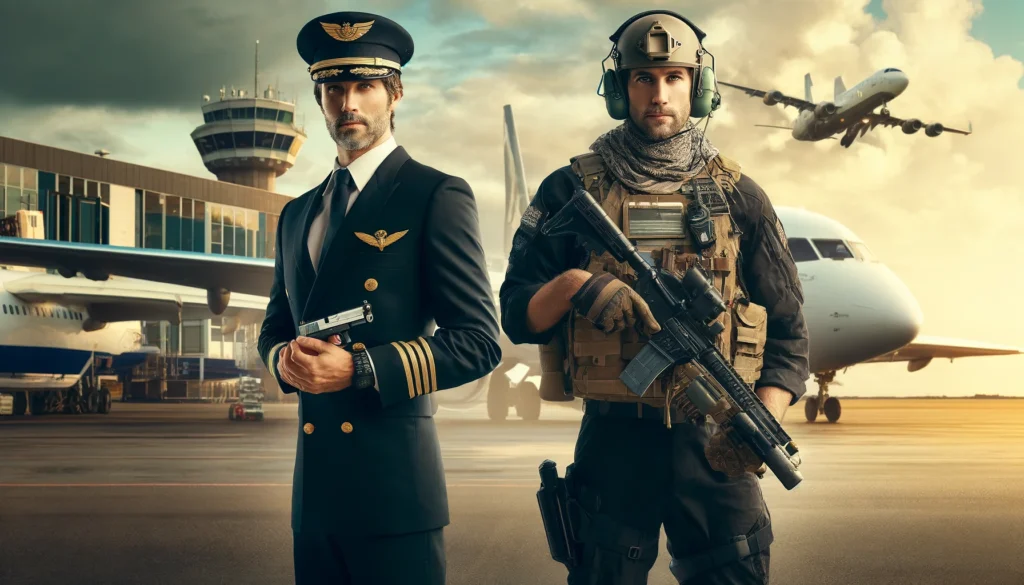
Getting familiar with the rules and training that pilots should undergo to carry firearms is one more element to consider for pilots carrying weapons. Permitting military pilots to handle firearms is one segment of their whole training regime that includes SERE techniques. This course will ensure that the pilots are ready to use their ‘Pilot gun’ in the best possible way if the need arises.
In this respect, the Federal Flight Deck Officer (FFDO) program in the USA trains pilots in commercial aviation so they can allow them to carry ‘pilot guns’ by sticking to strict rules. This program consists of stringent verification of the candidates’ backgrounds, psychological evaluations, and firearms training, drawing attention to the meticulousness in incorporating this means of control in the commercial flight deck as an anti-terrorism and Aircraft Hijacking prevention strategy.
“Pilot gun” in the context of Aviation security: What the Future Holds
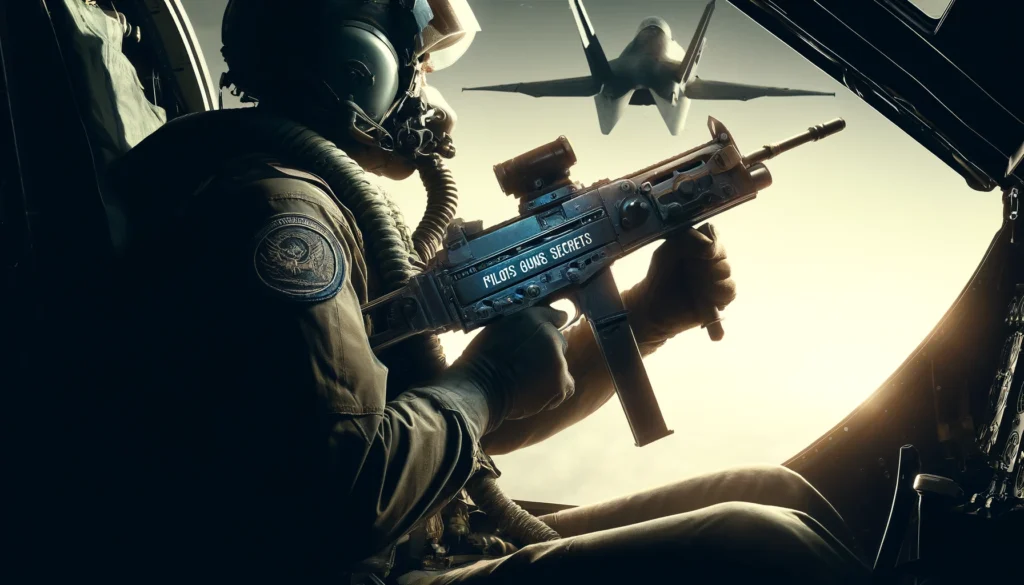
Furthermore, considerations to the future, the role of “pilot guns,” including military and commercial aviation, seems adaptable to the shifting security globe and new technology development. Innovations in pilots’ individual defense weapons, non-lethal alternatives, and advanced cockpit security systems may lead to changes in how pilots are equipped for security and personal protection willingly, and the measures to protect aircraft and passengers in place will be steered in a new direction.
Furthermore, the ongoing debate over allowing guns to the pilots of commercial planes and the efficiency of the mentioned strategy of flight security is going to be another issue that will shape the policies and public opinion. Moreover, With aviation adjusting to the changing circumstances, the query of whether weapons get included in pilots’ protocols is a substantial criticality; in this context, safety, security, and practicality remain the main pillars.
Do Air Force Pilots Carry guns
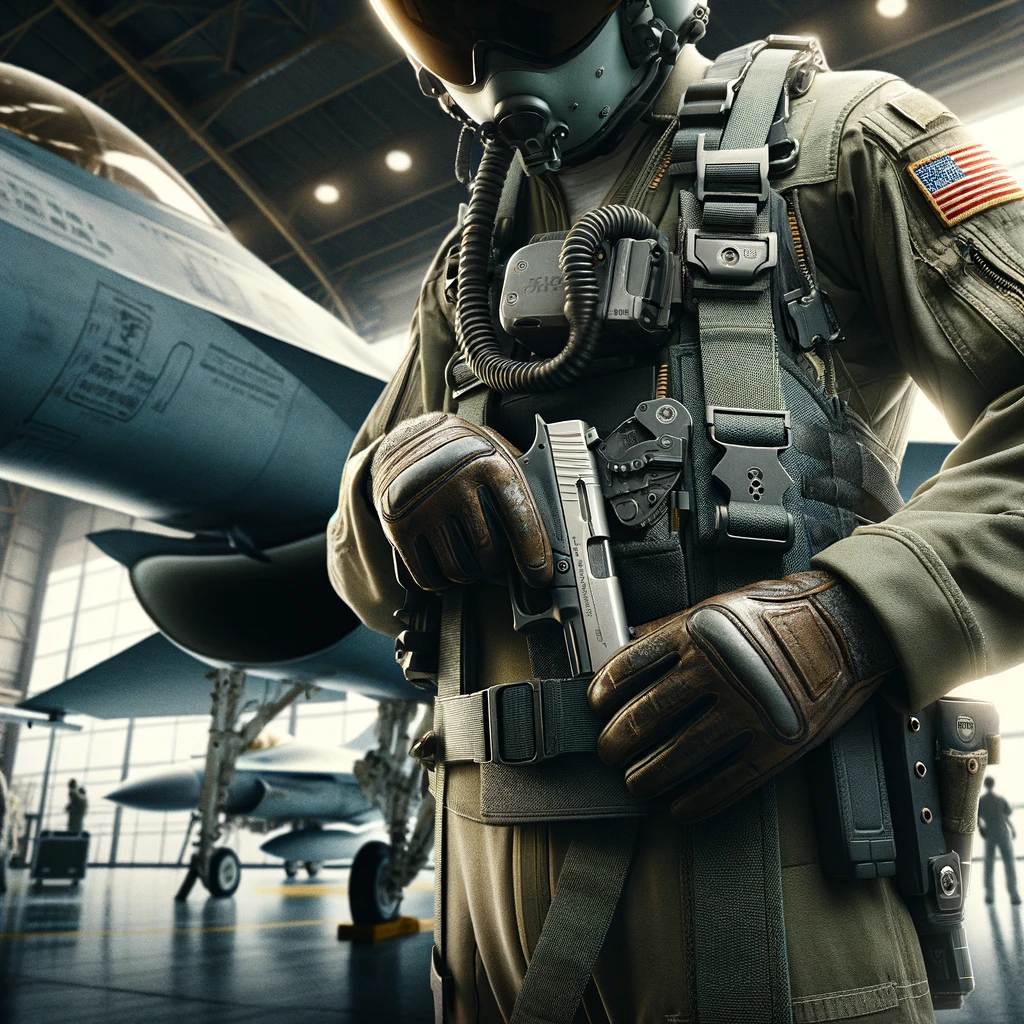
Indeed, Air Force pilots are given guns in their tactical survival kits. Generally, they are 9mm pistols intended for use in scenarios where a pilot goes down behind enemy lines. The role of the firearm is only for defensive and emergency signaling, not for combat. Such practice is common in U.S. Air Forces of different countries to ensure the survival of the pilots in hostile circumstances.
Pilot G2 Pen Gun: Separating Truth from Lies
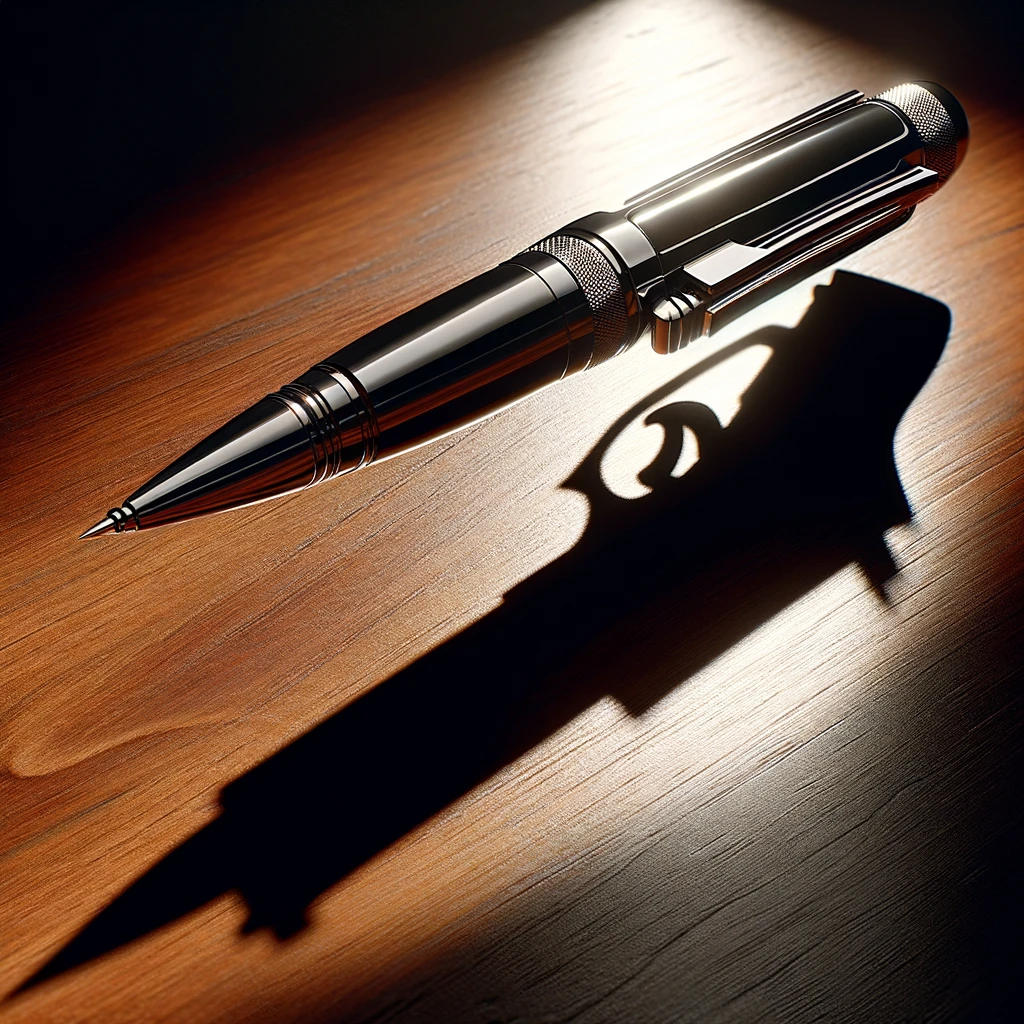
“Pilot G2 pen gun” is a conjunction of the Pilot G2 pen, well known for its reliability and smooth writing, and the concept of a pen gun. Moreover, a small hidden weapon that is designed to shoot one single bullet. It is important to note that the Pilot Corporation does not build or sell pen guns; the concept of a pen gun exists independently of the Pilot G2 pen brand. Pen guns are high-tech objects commonly used in intelligence & spy agencies, though they have nothing to do with or bear any affiliation to the Pilot Pen enterprise.
Do Fighter Jet Pilots Carry Guns?
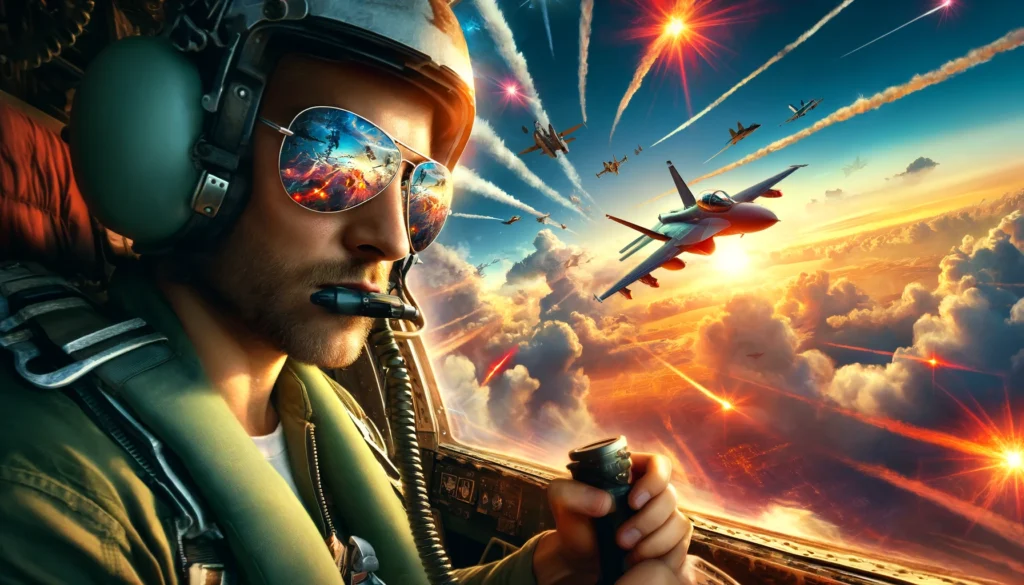
Furthermore, simply like other allied members of the broader Air Force, fighter plane pilots are given their survival firearms while on duty, moreover, as a last resort, the pilot uses these guns in case of an aircraft ejection where the pilot may need to protect themselves. The presence of a ‘pilot gun’ in the gear of a fighter pilot shows that the military is determined to ensure the pilots can defend themselves regardless of the circumstances, even when behind the line of enemy guns.
Gun Pilot: Specifying the role
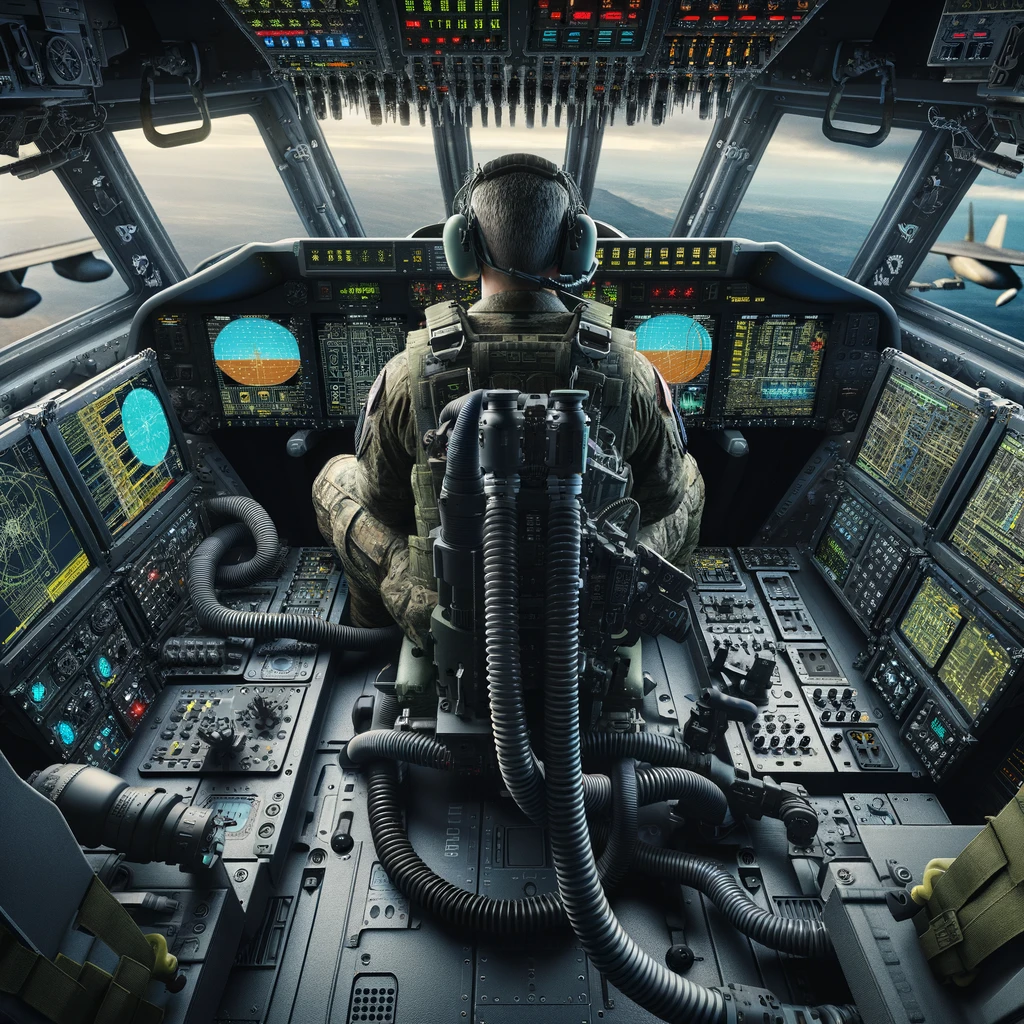
The term “gun pilot” generally refers to pilots flying with armed combat aircraft, moreover, with a particular focus on close air support or troop assistance. This illustration means the AC-130 gunship pilots who carry a lot of battlefield support weaponry. The pilots are professionals who specialize in firing the weapons of their aircraft to help the ground forces implement military operations effectively.
Pilot Gun Cockpit: Knowing About Its Nature
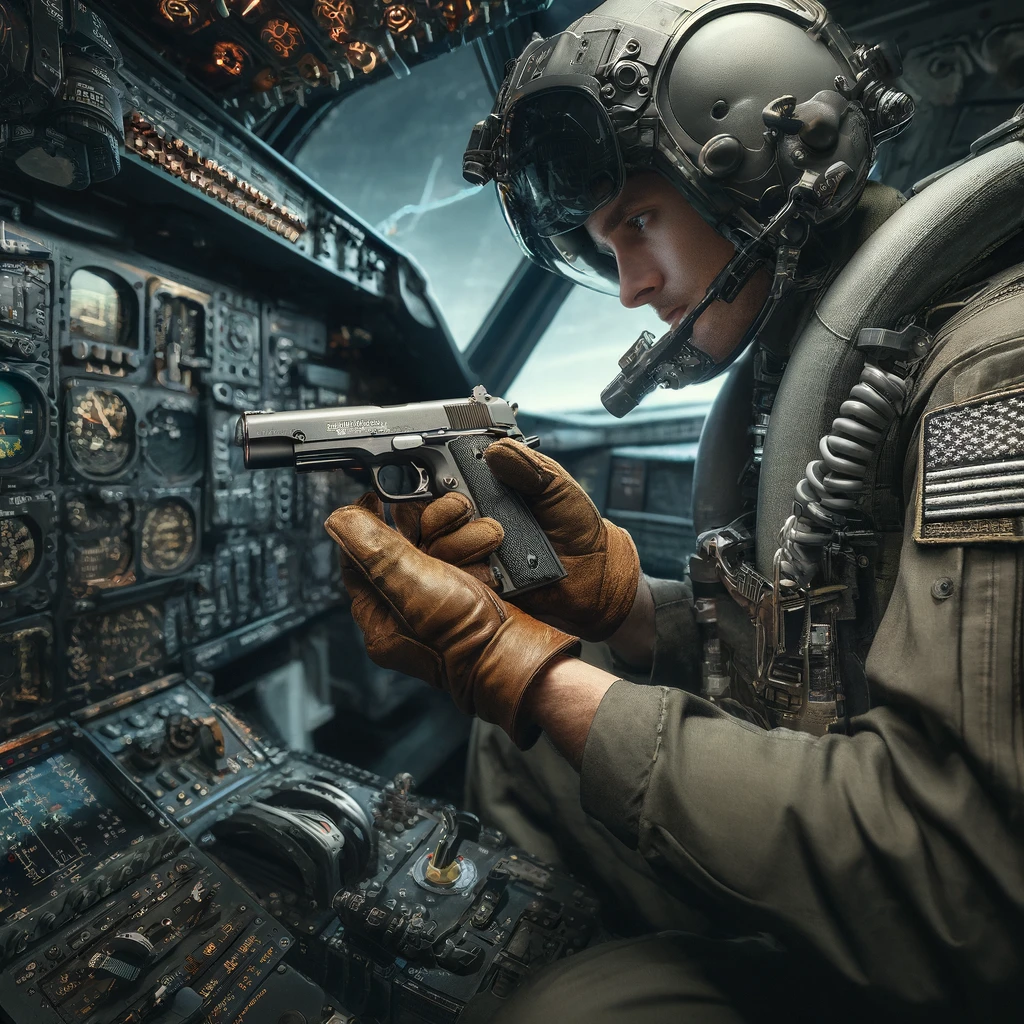
The term “pilot gun cockpit” refers to the situation when a pilot, both of the military and commercial, has a firearm inside of the cockpit. That “pilot gun” is used in the military as a component of the pilot’s assault pack, which is utilized as a last resort during an emergency on the ground. In particular, the Federal Flight Deck Officer program in the United States requires pilots to be well-trained to carry firearms for the prevention of invasions in the cockpit or hijackings. That implies a strategic way of upgrading flight safety and protecting the lives of all passengers.
Can Pilots Have Tattoos? Breaking Down Aviation Myths: Shocking Truth!

